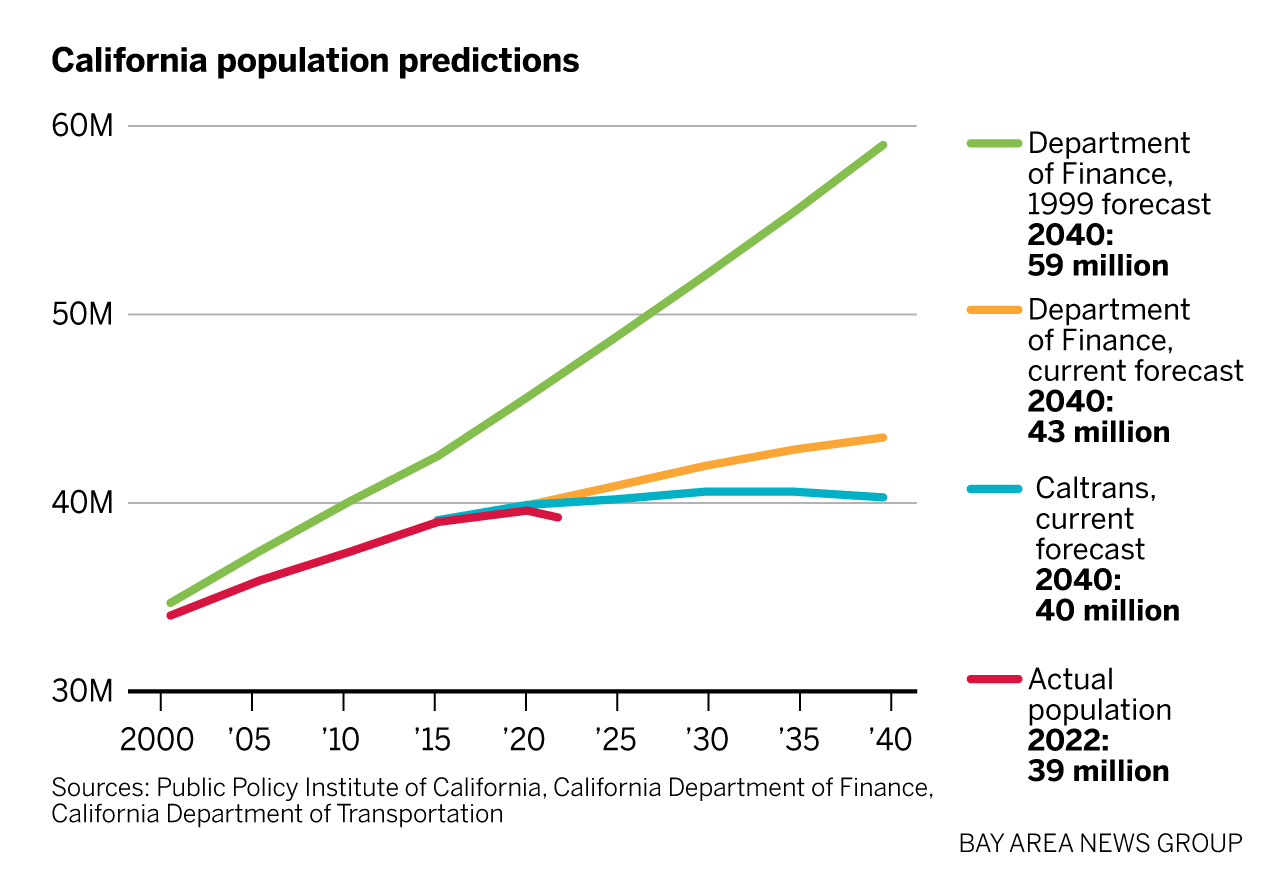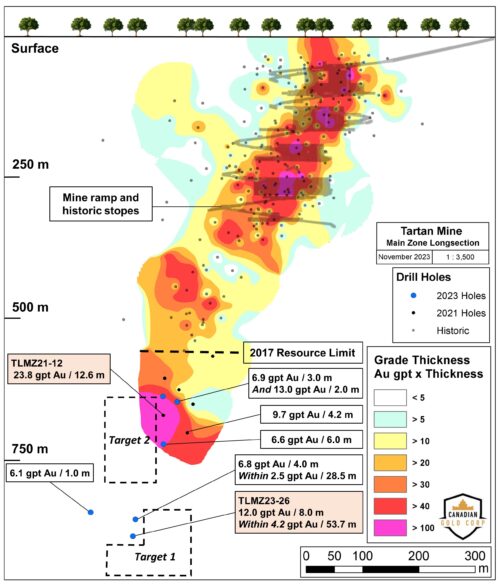Analyzing California's Population Growth: The Significance Of Immigration

Table of Contents
Historical Trends of Immigration to California
California's diverse population is a direct result of its history as a destination for immigrants from across the globe. Understanding these historical trends is key to analyzing the current demographic landscape.
Early Immigration Waves
The Gold Rush of 1849 triggered the first major wave of immigration to California, attracting people from all over the world seeking fortune. This initial surge dramatically altered the state's demographics.
- Key immigration acts: While there weren't specific acts solely targeting California initially, national immigration policies like the Chinese Exclusion Act of 1882 significantly impacted the state's population growth by restricting Chinese immigration, which had been substantial during the Gold Rush era.
- Impact on California's population: The Gold Rush era led to a massive increase in population, transforming previously sparsely populated areas into bustling towns and cities. This influx greatly diversified the state's population, albeit with significant biases and inequalities.
- Demographic shifts: The early immigration waves established a foundation for California's multicultural character, with significant populations from China, Mexico, and various European countries, leading to the complex ethnic and cultural makeup we see today. Data from this era, while incomplete, reveals exponential growth rates unprecedented in California's history.
20th and 21st Century Immigration
The 20th and 21st centuries saw continued, and often accelerating, waves of immigration to California. Post-World War II, immigration from Mexico increased significantly, shaping California's demographics in profound ways.
- Changes in immigration laws: The Immigration and Nationality Act of 1965 significantly altered immigration patterns by abolishing national origin quotas. This led to increased immigration from Asia and Latin America, further diversifying California's population.
- Leading countries of origin: Mexico has consistently been the leading source of immigrants to California throughout the 20th and 21st centuries, followed by countries in Asia (China, Philippines, India, Vietnam) and other parts of the world.
- Impact on specific regions of California: Certain regions of California, such as Southern California and the Central Valley, experienced particularly high rates of immigration, leading to distinct demographic profiles in these areas. The impact on these areas has also included effects on housing and infrastructure.
Economic Contributions of Immigrants to California
Immigrants have made, and continue to make, substantial contributions to California's economy. Their labor, entrepreneurship, and spending power are vital to the state's overall economic health.
Labor Force Participation
Immigrants form a significant portion of California's workforce, contributing across various sectors, from agriculture and construction to technology and healthcare.
- Immigrant entrepreneurship: Immigrants are significantly more likely to start businesses than native-born Californians, contributing significantly to job creation and innovation within the state.
- Filling labor shortages: Immigrants often fill labor shortages in industries facing worker deficits, ensuring that crucial sectors of the economy remain operational.
- Economic contributions by industry: Immigrants' contributions are spread across a wide spectrum of industries. Their participation boosts overall productivity and supports the entire California economy. Data consistently shows their disproportionate contribution to GDP growth in certain sectors.
Tax Revenue and Consumption
Immigrants contribute significantly to California's tax base through income taxes, sales taxes, and other forms of taxation. Their consumer spending further fuels the economy.
- Tax revenue from different immigrant groups: While detailed breakdowns vary, data shows that immigrants collectively contribute billions of dollars in tax revenue annually.
- Effect on local economies: Immigrant spending supports local businesses, creates jobs, and contributes to the overall economic vitality of communities across California.
- Overall economic growth: The combined effects of immigrant tax revenue and consumer spending are major drivers of California's overall economic growth and prosperity.
Demographic and Cultural Impacts of Immigration on California
The influx of immigrants has profoundly shaped California's demographic makeup and cultural landscape, creating a vibrant and diverse society.
Changing Demographics
Immigration has dramatically diversified California's population, leading to a richer and more complex social fabric.
- Changes in ethnic composition: The percentage of non-Hispanic white Californians has decreased over the past few decades, while the Hispanic, Asian, and other minority populations have significantly increased.
- Language diversity: California boasts a high level of linguistic diversity, reflecting its immigrant population. This diversity presents both opportunities and challenges for social cohesion and service provision.
- Cultural contributions: Immigrants have enriched California's culture through their traditions, food, art, music, and literature, adding to the state's unique character and identity.
Cultural Enrichment and Social Integration
While challenges of integration exist, the cultural exchange fostered by immigration has primarily enriched California's society.
- Examples of cultural contributions (food, art, music): California's culinary scene, for instance, is a testament to the diverse cultural contributions of its immigrant communities. Similarly, the arts and music scenes reflect the vibrant mix of traditions.
- Social challenges faced by immigrants: Issues such as language barriers, discrimination, and navigating a new system can pose significant challenges for immigrants.
- Community initiatives: Many community organizations and initiatives work to support immigrants' integration and celebrate their cultural contributions, fostering a more inclusive society.
Policy Implications and Future Projections
California's immigration policies and future population projections are intertwined, creating both opportunities and challenges.
Current Immigration Policies and their Impact
Current federal and state immigration policies significantly impact California's population dynamics.
- Impact of DACA: The Deferred Action for Childhood Arrivals (DACA) program has provided temporary relief to undocumented immigrants brought to the U.S. as children, affecting their economic participation and integration into society.
- Sanctuary city policies: California's sanctuary city policies aim to protect undocumented immigrants from deportation, which may affect local enforcement and federal relations.
- Border security on California's demographic trends: Border security measures and enforcement policies can directly impact the flow of immigration into California, impacting population growth projections.
Future Projections and Challenges
Future projections for California's population growth consider various factors, including ongoing immigration patterns and potential policy changes.
- Projected population growth: Demographic projections suggest continued population growth in California, albeit at varying rates depending on various factors.
- Potential challenges related to infrastructure: Continued population growth, driven in part by immigration, places a strain on existing infrastructure such as housing, transportation, and public services.
- Resource allocation and social services: Meeting the needs of a growing population, particularly in areas with high concentrations of immigrants, requires careful planning and allocation of resources for social services like healthcare and education.
Conclusion
California's population growth story is inextricably linked to immigration. From its early history to the present day, immigration has profoundly shaped the state's economic prosperity, cultural richness, and demographic landscape. Understanding the historical trends, economic contributions, and multifaceted cultural impacts of immigration is essential for effective policymaking and responsible planning. Continued research and analysis of California's immigration patterns are crucial for navigating future challenges and maximizing the benefits of this dynamic demographic force. Further exploration of the complex relationship between California's population growth and immigration is encouraged to fully comprehend this vital aspect of the state’s identity and future.

Featured Posts
-
 Michelle Mone From Rags To Riches And Back Again
May 27, 2025
Michelle Mone From Rags To Riches And Back Again
May 27, 2025 -
 The Redstone Family Feud Parallels To Good Night And Good Luck
May 27, 2025
The Redstone Family Feud Parallels To Good Night And Good Luck
May 27, 2025 -
 Avrupa Merkez Bankasi Ndan Abd Ye Karsi Misilleme Tehditi Piyasalar Nasil Tepki Verecek
May 27, 2025
Avrupa Merkez Bankasi Ndan Abd Ye Karsi Misilleme Tehditi Piyasalar Nasil Tepki Verecek
May 27, 2025 -
 The Gops Legislative Drive During The Trump Presidency Successes And Setbacks
May 27, 2025
The Gops Legislative Drive During The Trump Presidency Successes And Setbacks
May 27, 2025 -
 380 Vagas De Emprego Em Maceio Como Se Inscrever No Sine
May 27, 2025
380 Vagas De Emprego Em Maceio Como Se Inscrever No Sine
May 27, 2025
Latest Posts
-
 Media Advisory Joy Smith Foundations Inaugural Launch
May 30, 2025
Media Advisory Joy Smith Foundations Inaugural Launch
May 30, 2025 -
 Joy Smith Foundation Launch Media Alert And Photo Advisory
May 30, 2025
Joy Smith Foundation Launch Media Alert And Photo Advisory
May 30, 2025 -
 Canadian Gold Corp Secures 300 000 For Tartan Mine Ni 43 101 And Pea
May 30, 2025
Canadian Gold Corp Secures 300 000 For Tartan Mine Ni 43 101 And Pea
May 30, 2025 -
 Canadian Gold Corp 300 000 Manitoba Mineral Development Fund Grant For Tartan Mine Resource Update
May 30, 2025
Canadian Gold Corp 300 000 Manitoba Mineral Development Fund Grant For Tartan Mine Resource Update
May 30, 2025 -
 Analysis Of Child Welfare Intervention Rates For First Nations Parents In Manitoba 1998 2019
May 30, 2025
Analysis Of Child Welfare Intervention Rates For First Nations Parents In Manitoba 1998 2019
May 30, 2025
